
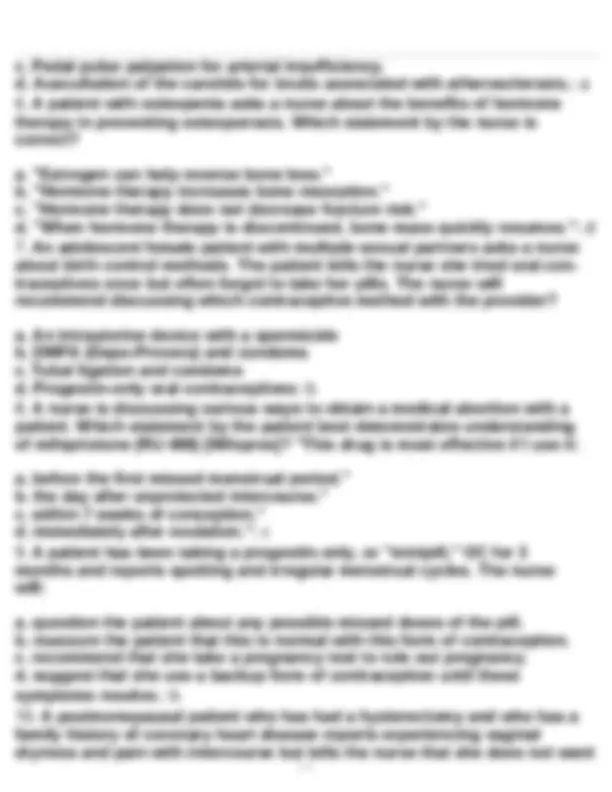
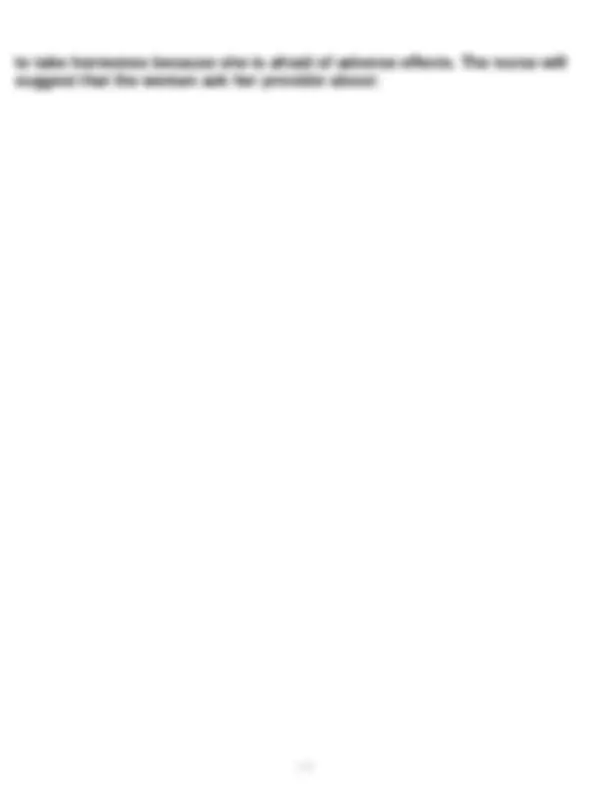
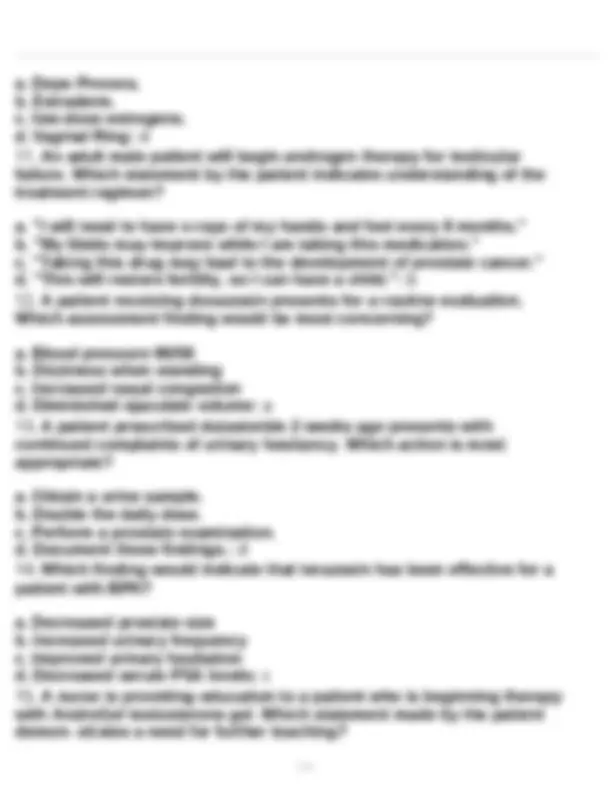

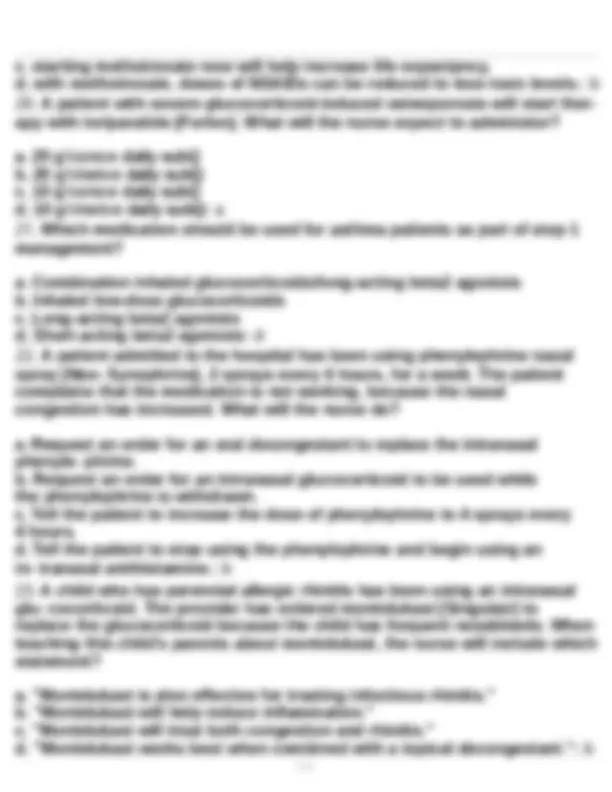
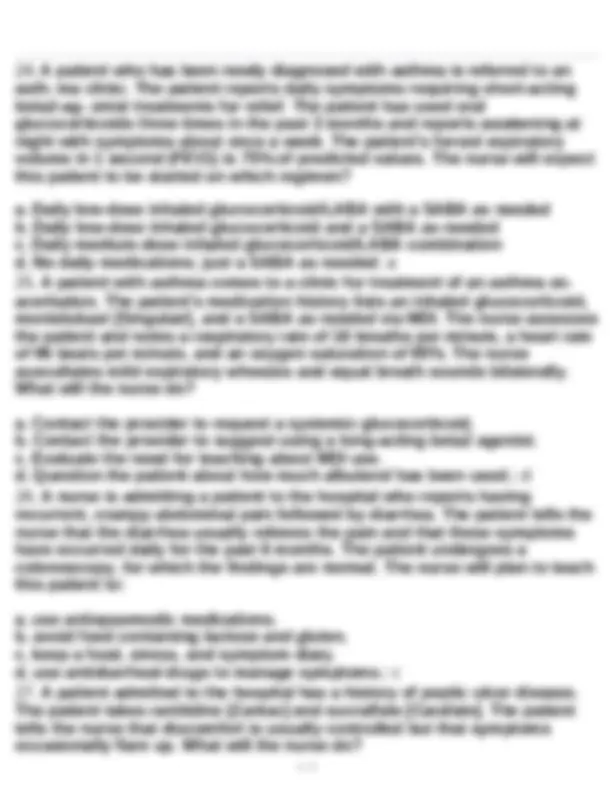
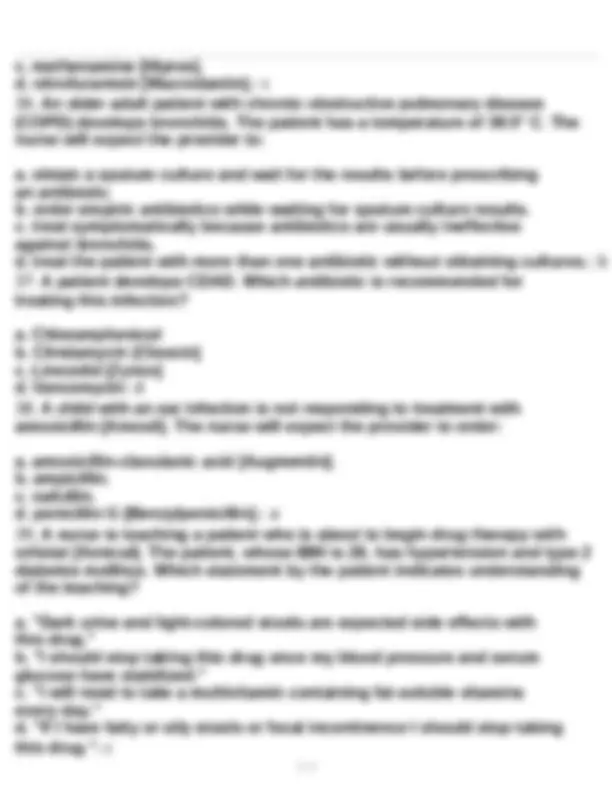
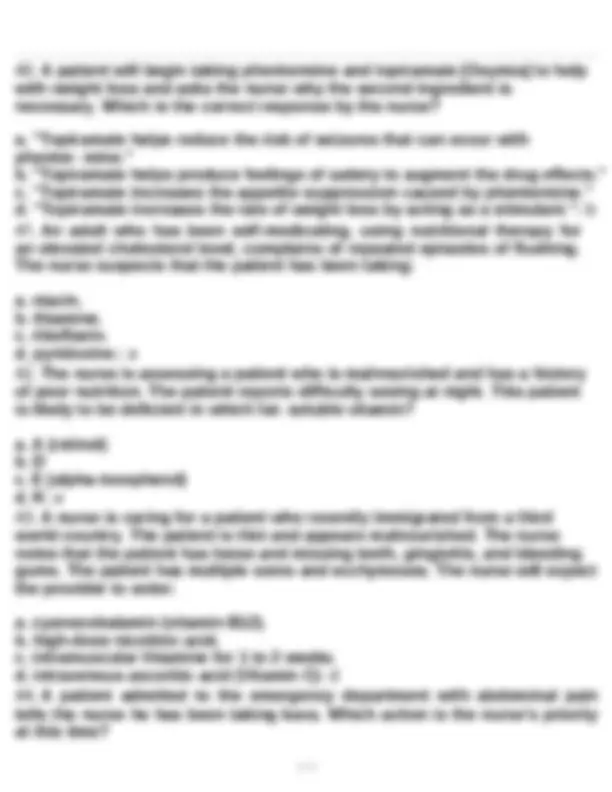
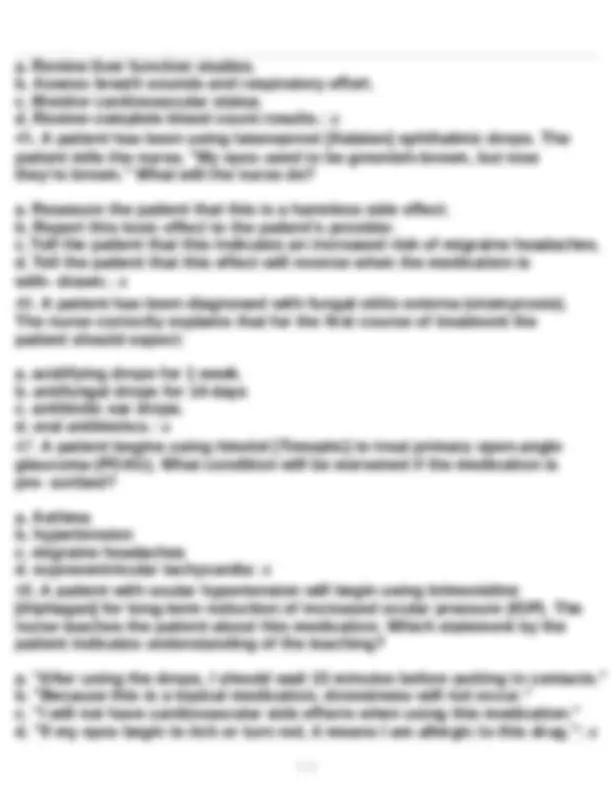


Study with the several resources on Docsity

Earn points by helping other students or get them with a premium plan


Prepare for your exams
Study with the several resources on Docsity

Earn points to download
Earn points by helping other students or get them with a premium plan
Community
Ask the community for help and clear up your study doubts
Discover the best universities in your country according to Docsity users
Free resources
Download our free guides on studying techniques, anxiety management strategies, and thesis advice from Docsity tutors
Advanced Pharmacology Week 8 Final Exam
Typology: Exams
1 / 16

This page cannot be seen from the preview
Don't miss anything!










b. Cranial nerve testing for peripheral neuropathy.
to take hormones because she is afraid of adverse effects. The nurse will suggest that the woman ask her provider about:
a. Depo Provera. b. Estraderm. c. low-dose estrogens. d. Vaginal Ring: d
b. "I should avoid direct skin-to-skin contact with my spouse where the medication was applied." c. "I should have my blood drawn for laboratory tests in 14 days." d. "I should apply the medication to my genitals for best results.": d
b. starting methotrexate early can help delay joint degeneration.
a. Ask the provider about ordering an endoscopic examination. b. Discuss H. Pylori testing and order for an antibiotic. c. Contact the provider to discuss switching to a proton pump inhibitor. d. Counsel the patient to avoid beverages containing caffeine.: b
c. methenamine [Hiprex]. d. nitrofurantoin [Macrodantin].: c